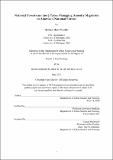| dc.contributor.advisor | Lawrence Susskind. | en_US |
| dc.contributor.author | Moeller, Hannah-Hunt. | en_US |
| dc.contributor.other | Massachusetts Institute of Technology. Department of Urban Studies and Planning. | en_US |
| dc.date.accessioned | 2020-09-15T22:07:10Z | |
| dc.date.available | 2020-09-15T22:07:10Z | |
| dc.date.issued | 2020 | en_US |
| dc.identifier.uri | https://hdl.handle.net/1721.1/127633 | |
| dc.description | Thesis: M.C.P., Massachusetts Institute of Technology, Department of Urban Studies and Planning, May, 2020 | en_US |
| dc.description | "May 2020." Cataloged from the official PDF of thesis. | en_US |
| dc.description | Includes bibliographical references (pages 107-112). | en_US |
| dc.description.abstract | U.S. National Forests are natural amenities that create a pull factor for in-migration in adjacent counties. People are drawn to the scenic beauty, clean air, open space, and recreational access. Since the 1970s, researchers have described the phenomenon of amenity migration -- the movement of people based on the draw of natural amenities -- in counties adjacent to public lands. Simultaneously, recreational uses of U.S. National Forests (USNF) are increasing and expanding. Both amenity migrants and recreational users generate value to local and state economies as home and business owners, tax payers, and consumers of the outdoor recreation industry. They also present population pressures on USNF that increase risks of wildfire, ecosystem degradation, habitat destruction, and infrastructure damage. This thesis investigates (1) how amenity migration impacts USNF land managers and (2) what strategies can capture the values of USNF to support forest management. I answer these questions through a case study of Colorado's White River National Forest (WRNF) using mixed methods: stakeholder interviews, survey of land managers, ACS 5-Year demographic and economic industry data. As the most visited USNF in the county, the WRNF presents a valuable example of what other forests may experience in the future. From this case study, I extrapolate my findings for USNF across the Western Unites States. I categorize the findings of the study by challenges with regard to revenue, governance, and capacity. My results contend that USNF must incorporate both use values (recreational) and non-use values (lifestyle benefits) into its planning procedures. This thesis calls for decentralized land management to empower forest-level planning. Ultimately, I argue that USNF are common pool resources that rely on a network of partners to align environmental and economic benefits. | en_US |
| dc.description.statementofresponsibility | by Hannah-Hunt Moeller. | en_US |
| dc.format.extent | 112 pages | en_US |
| dc.language.iso | eng | en_US |
| dc.publisher | Massachusetts Institute of Technology | en_US |
| dc.rights | MIT theses may be protected by copyright. Please reuse MIT thesis content according to the MIT Libraries Permissions Policy, which is available through the URL provided. | en_US |
| dc.rights.uri | http://dspace.mit.edu/handle/1721.1/7582 | en_US |
| dc.subject | Urban Studies and Planning. | en_US |
| dc.title | National forests are (not) parks : managing amenity migration to America's national forests | en_US |
| dc.title.alternative | managing amenity migration to America's national forests | en_US |
| dc.type | Thesis | en_US |
| dc.description.degree | M.C.P. | en_US |
| dc.contributor.department | Massachusetts Institute of Technology. Department of Urban Studies and Planning | en_US |
| dc.identifier.oclc | 1193561536 | en_US |
| dc.description.collection | M.C.P. Massachusetts Institute of Technology, Department of Urban Studies and Planning | en_US |
| dspace.imported | 2020-09-15T22:07:09Z | en_US |
| mit.thesis.degree | Master | en_US |
| mit.thesis.department | UrbStud | en_US |
